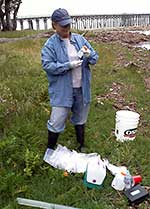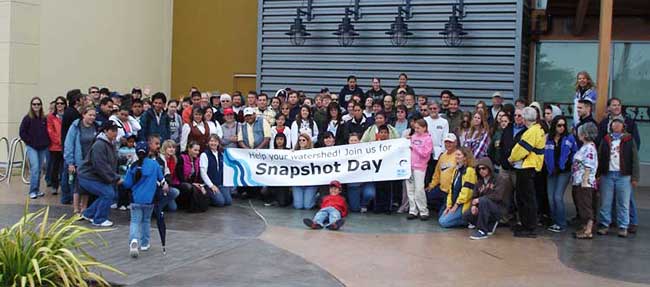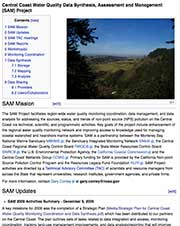Regional Monitoring, Data Access, and Interagency Coordination
 The ability to monitor water quality conditions comprehensively and accurately over time, and to use the data to make effective management decisions is a priority of the WQPP. The WQPP began its efforts to integrate monitoring programs and their reporting by working with key government agencies. Through the coordinated efforts of agency members of the WQPP and various public and private groups, the second in a series of action plans was developed to address the need for an integrated, comprehensive regional monitoring and reporting program. The WQPP's Action Plan II defines priority strategies for addressing monitoring and data sharing issues in the Sanctuary region.
The ability to monitor water quality conditions comprehensively and accurately over time, and to use the data to make effective management decisions is a priority of the WQPP. The WQPP began its efforts to integrate monitoring programs and their reporting by working with key government agencies. Through the coordinated efforts of agency members of the WQPP and various public and private groups, the second in a series of action plans was developed to address the need for an integrated, comprehensive regional monitoring and reporting program. The WQPP's Action Plan II defines priority strategies for addressing monitoring and data sharing issues in the Sanctuary region.
Summary of Strategies in Action Plan II:
Regional Monitoring
This strategy was designed to coordinate and build upon existing federal, state and local monitoring activities within the Sanctuary and its watersheds. The goal of the strategy has been to provide comprehensive information regarding existing water quality condition, long-term trends, and the success of pollution management efforts. Filling the needs of the region requires both enhanced monitoring and improved coordination. This coordination is being undertaken in both government monitoring programs, which are working to develop a statewide monitoring program for ocean waters and coastal watersheds, and through support of citizen monitoring groups. This latter effort has resulted in the formation of the Monterey Bay Sanctuary Citizen Watershed Monitoring Network, a network for volunteer monitoring groups, which actively monitor in the watersheds that drain to the Sanctuary.

Interagency Coordination
Interagency coordination establishes a framework for the continuous coordination on water quality issues and watershed management, including funding priorities, education, technical assistance, monitoring and data exchange, permit review, and enforcement.
 Data Access
Data Access
This strategy provides local, state and federal agencies with easy access to existing database systems containing water quality and related information. The goal is to provide resource managers with readily understandable information they need to evaluate environmental problems and make effective management decisions.
In 2006 the MBNMS received funding to compile data from many local monitoring programs. The Central Coast Synthesis, Assessment and Management Project completed a water quality assessment (updated in 2012) and strategic plan for monitoring water quality on the Central Coast.
This program addresses many of the strategies outlined in the Regional Monitoring Action Plan. WQPP staff continue to facilitate region-wide water quality monitoring coordination, data management, and data analysis for addressing fundamental questions surrounding non-point source (NPS) pollution in the region through technical and scientific activities.
Looking to the Future
In 2012, we initiated an effort to take regional monitoring to the next level. In the past, the objective was to ensure that autonomous monitoring programs were collecting data that was of known quality and comparable in order to answer questions that were important to researchers and resource managers. In coming years, our goal is to integrate and enhance many of the existing programs into one surface water quality monitoring program that is designed to answer specific questions. This concept will integrate CCAMP Coastal Confluence monitoring, stormwater monitoring, Central Coast Long-term Environmental Assessment Network (CCLEAN) monitoring, and Areas of Special Biological Significance (ASBS) monitoring into one programmatic effort.
